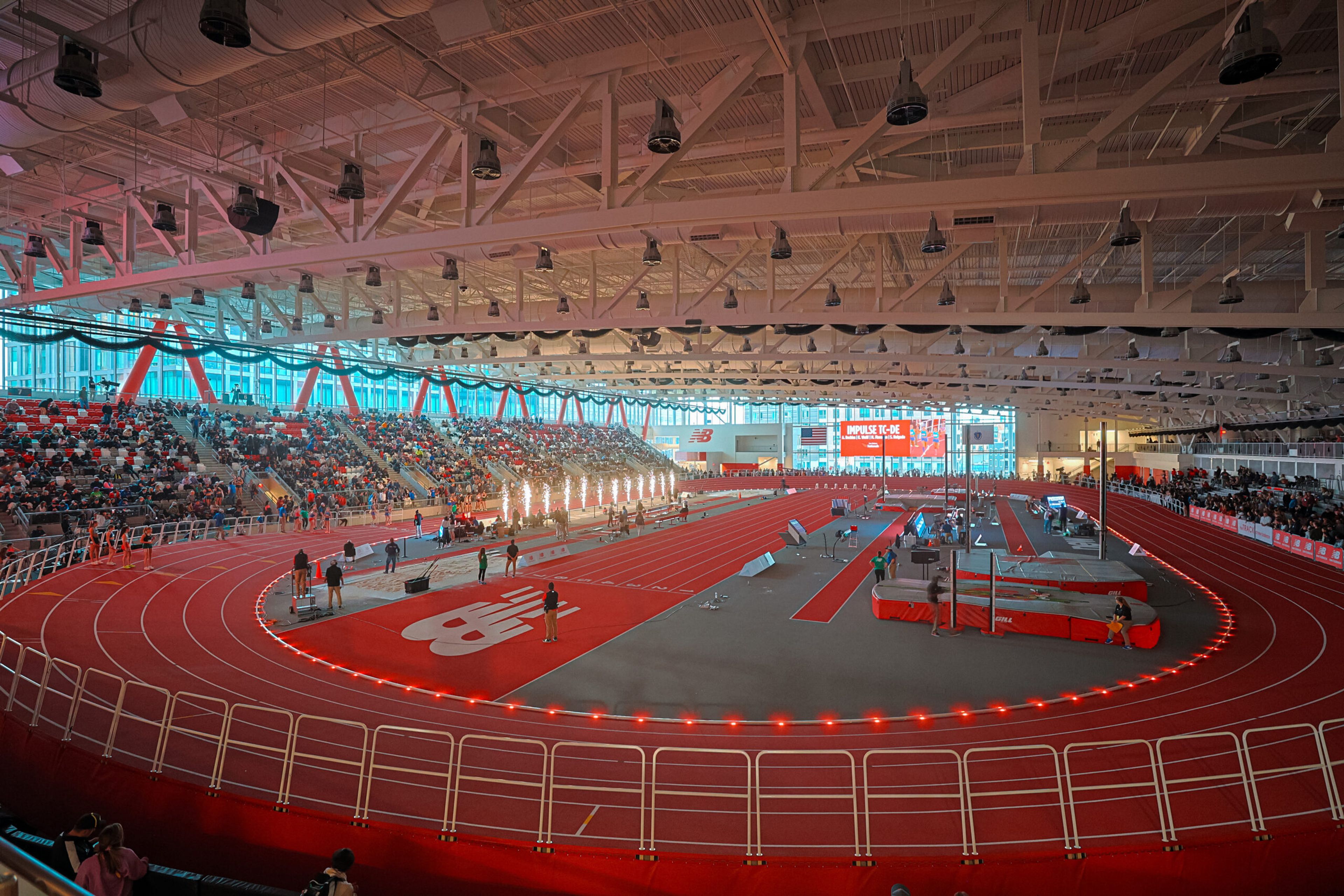Fastest 100m Times for Men: Open, NCAA, and High School
Learn about the 100m records and fastest times in track and field sprinting, the ultimate test of speed and power.
The Significance of the 100m Dash
The 100 meter dash holds a special place in the world of track and field. Known as the event that determines the “world’s fastest human,” it is a test of pure speed, power, and endurance. The race is a staple at every major track and field competition, including the Olympic Games and World Championships, where it draws massive global attention.
Over the decades, legendary athletes like Usain Bolt, Maurice Greene, and Noah Lyles have cemented their names in history with iconic performances. The 100m is more than just a race—it’s a showdown of the world’s fastest athletes, representing a global stage where top competitors from countries like the USA, Jamaica, and Great Britain battle for supremacy.
The progression of world records for the 100 meter dash has continued up to March 2022, showcasing ongoing developments in track and field.
What is the Fastest 100m Time?
The fastest men's 100m time overall is 9.58 seconds by Usain Bolt at the 2009 World Championships. The fastest collegiate time is 9.82 seconds by Christian Coleman of Tennessee in 2017. The fastest high school time is 9.93 seconds by Christian Miller of Creekside High School in 2024.
Fastest 100m Times of All Time (Open)
At the professional or "open" level, the competition to become the fastest man alive is fierce. Below are the top all-time 100m performances, adjusted for wind and altitude, showcasing the most elite sprinters the world has ever seen.
Top Performers (Open)
- Usain Bolt - 9.63s (9.58s, wind: +0.9) - Berlin, August 16, 2009 (World Championships, WR)
- Usain Bolt - 9.69s (9.69s, wind: 0.0) - Beijing, August 16, 2008 (Olympic Games, WR)
- Usain Bolt - 9.70s (9.77s, wind: -1.3) - Brussels, September 5, 2008 (VD)
- Usain Bolt - 9.70s (9.63s, wind: +1.5) - London, August 5, 2012 (Olympic Games)
- Yohan Blake - 9.70s (9.69s, wind: -0.1) - Lausanne, August 23, 2012 (Athl)
- Asafa Powell - 9.75s (9.72s, wind: +0.2) - Lausanne, September 3, 2008 (Athl)
- Usain Bolt - 9.75s (9.76s, wind: -0.1) - Rome, May 31, 2012 (GGala)
- Asafa Powell - 9.76s (9.83s, wind: -1.3) - Brussels, September 5, 2008 (VD)
- Tyson Gay - 9.76s (9.71s, wind: +0.9) - Berlin, August 16, 2009 (World Championships, AR)
- Tyson Gay - 9.76s (9.78s, wind: -0.4) - London, August 13, 2010 (LGP)
- Usain Bolt - 9.76s (9.77s, wind: -0.3) - Moscow, August 11, 2013 (World Championships)
- Justin Gatlin - 9.76s (9.78s, wind: -0.3) - Monaco, July 17, 2015 (Herc)
- Usain Bolt - 9.76s (9.79s, wind: -0.5) - Beijing, August 23, 2015 (World Championships)
- Justin Gatlin - 9.77s (9.80s, wind: -0.5) - Beijing, August 23, 2015 (World Championships)
- Christian Coleman - 9.77s (9.79s, wind: -0.3) - Brussels, August 31, 2018 (VD)
- Usain Bolt - 9.78s (9.79s, wind: -0.2) - Saint-Denis, July 17, 2009 (GL)
- Asafa Powell - 9.79s (9.78s, wind: 0.0) - Rieti, September 9, 2007 (GP)
- Tyson Gay - 9.79s (9.77s, wind: +0.4) - Rome, July 10, 2009 (GGala, AR)
- Tyson Gay - 9.79s (9.69s, wind: +2.0) - Shanghai, September 20, 2009 (GP, AR)
- Justin Gatlin - 9.79s (9.74s, wind: +0.9) - Doha, May 15, 2015 (DL)
- Christian Coleman - 9.79s (9.76s, wind: +0.6) - Doha, September 28, 2019 (World Championships)
- Noah Lyles - 9.79s (9.81s, wind: -0.3) - London, July 20, 2024 (Diamond League)
- Maurice Greene - 9.80s (9.79s, wind: +0.1) - Athens, June 16, 1999 (Tsik, WR)
- Usain Bolt - 9.80s (9.72s, wind: +1.7) - New York City, May 31, 2008 (GP, WR)
- Tyson Gay - 9.80s (9.79s, wind: +0.1) - Brussels, August 27, 2010 (VD)
- Justin Gatlin - 9.80s (10.02s, wind: -3.5) - Tokyo, May 11, 2014 (GP)
- Justin Gatlin - 9.80s (9.77s, wind: +0.6) - Brussels, September 5, 2014 (VD)
- Justin Gatlin - 9.80s (9.75s, wind: +0.9) - Rome, June 4, 2015 (GGala)
- Usain Bolt - 9.80s (9.87s, wind: -1.2) - London, July 24, 2015 (Diamond League)
- Christian Coleman - 9.80s (9.81s, wind: -0.1) - Stanford, June 30, 2019 (Diamond League)
- Fred Kerley - 9.80s (9.79s, wind: +0.1) - Eugene, July 15, 2022 (World Championships)
- Maurice Greene - 9.81s (9.80s, wind: +0.2) - Seville, August 22, 1999 (World Championships)
- Usain Bolt - 9.81s (9.91s, wind: -1.7) - London, July 24, 2009 (LGP)
- Asafa Powell - 9.81s (9.83s, wind: -0.5) - Ostrava, May 27, 2010
- Yohan Blake - 9.81s (9.75s, wind: +1.1) - Kingston, June 29, 2012 (NC)
- Lamont Marcell Jacobs - 9.81s (9.80s, wind: +0.1) - Tokyo, August 1, 2021 (Olympic Games)
These adjusted marks take into account wind and altitude, highlighting athletes like Usain Bolt, Tyson Gay, Justin Gatlin, and Christian Coleman, who have consistently pushed the limits of speed on the world stage.
Fastest NCAA 100m Times
The NCAA has been a proving ground for future Olympians and professional athletes. Many of these sprinters went on to have illustrious careers after their collegiate days. Below are the top 25 NCAA 100m times, where the competition is fierce, and the performances reflect the next generation of world-class athletes.
Top 25 NCAA 100m Performers and Performances
- Christian Coleman (Tennessee) - 9.82s (June 7, 2017)
- Micah Williams (Oregon) - 9.86s (May 27, 2022)
- Divine Oduduru (Texas Tech) - 9.86s (June 7, 2019)
- Justin Gatlin (Tennessee) - 9.87s (May 11, 2012)
- Courtney Lindsey (Texas Tech) - 9.89s (June 9, 2023)
- PJ Austin (Florida) - 9.89s (June 7, 2023)
- Ngoni Makusha (Florida State) - 9.89s (June 10, 2011)
- Godson Oghenebrume (LSU) - 9.90s (June 9, 2023)
- Benjamin Azamati (West Texas A&M) - 9.90s (March 25, 2022)
- Trayvon Bromell (Baylor) - 9.90s (June 10, 2015)
- Shaun Maswanganyi (Houston) - 9.91s (June 9, 2023)
- Terrence Jones (Texas Tech) - 9.91s (April 14, 2023)
- Davidson Ezinwa (Azusa Pacific) - 9.91s (April 11, 1992)
- Udodi Onwuzurike (Stanford) - 9.92s (May 26, 2023)
- Ato Boldon (UCLA) - 9.92s (June 1, 1996)
- Cravon Gillespie (Oregon) - 9.93s (June 7, 2019)
- Christopher Belcher (North Carolina A&T) - 9.93s (June 7, 2017)
- Cameron Burrell (Houston) - 9.93s (June 7, 2017)
- Clayton Vaughn (UT Arlington) - 9.93s (May 10, 2015)
- Richard Thompson (LSU) - 9.93s (May 18, 2008)
- Walter Dix (Florida State) - 9.93s (June 8, 2007)
- Favour Ashe (Auburn) - 9.94s (May 24, 2024)
- T'Mars McCallum (Tennessee) - 9.94s (April 20, 2024)
- Jo'Vaughn Martin (Florida State) - 9.94s (April 16, 2021)
- Louie Hinchliffe (Houston) - 9.95s (June 7, 2024)
These NCAA athletes are among the best in collegiate history and often go on to dominate at the professional level, with several already securing their place in history through world-class performances.
Fastest High School 100m Times
The fastest high school athletes provide an early glimpse into the future of sprinting, with some already matching the times of collegiate athletes and even professionals. Below are the fastest 100m performances recorded by high schoolers.
- Christian Miller (Creekside, St. Johns, Florida) - 9.93s (2024)
- Trentavis Friday (Cherryville, North Carolina) - 10.00s (2014)
- Jeff Demps (South Lake, Groveland, Florida) - 10.01s (2008)
- Anthony Schwartz (American Heritage, Plantation, Florida) - 10.09s (2018)
- Jaylen Slade (IMG Academy, Bradenton, Florida) - 10.09s (2021)
- Matthew Boling (Strake Jesuit, Houston, Texas) - 10.11s (2019)
- Derrick Florence (Ball, Galveston, Texas) - 10.13s (1986)
- T'Mars McCallum (Carolina Forest, Myrtle Beach, South Carolina) - 10.13s (2022)
- Jordan Ware (Central, Memphis, Tennessee) - 10.13s (2023)
- Noah Lyles (Williams, Alexandria, Virginia) - 10.14s (2015)
- Jordan Anthony (Tylertown, Mississippi) - 10.14s (2022)
- Rodrick Pleasant (Serra, Gardena, California) - 10.14s (2022)
These high school athletes have clocked exceptional times, and many of them will likely go on to have stellar careers at the collegiate and professional levels.
Historical Evolution of the 100m Dash
The 100m dash has a storied history that dates back to the inaugural modern Olympic Games in 1896, held in Athens. The first official 100m dash saw athletes competing on a dirt track, with the winning time clocked at 12.0 seconds. This humble beginning set the stage for what would become one of the most electrifying events in track and field.
In the early 20th century, American sprinters dominated the scene. Jesse Owens, a name synonymous with speed and grace, set a world record of 10.2 seconds in 1936, a performance that resonated far beyond the track, especially given the political climate of the Berlin Olympics. The 1960s marked a significant era with African American athletes like Bob Hayes and Jim Hines breaking the 10-second barrier, a monumental achievement that redefined the limits of human speed.
The 1980s and 1990s were the golden years for sprinters like Carl Lewis and Maurice Greene. Carl Lewis, with his multiple Olympic gold medals, and Maurice Greene, who set numerous world records, became household names and inspired a generation of athletes. The turn of the century saw the rise of Usain Bolt, whose 9.58-second world record in 2009 remains unchallenged. Bolt’s dominance and charismatic personality brought unprecedented attention to the 100m dash, making it a must-watch event at every major competition.
Today, the 100m dash continues to captivate audiences worldwide. With advancements in technology, training methods, and athlete performance, the event has evolved significantly from its early days. The 100m dash remains a testament to human speed and endurance, and its rich history is a source of inspiration for future generations of sprinters.
The Science of Speed and Performance
Speed in the 100m dash is essentially the product of two factors: step rate (how many steps per second) and stride length (how long each step is). Breaking the 100m dash into four distinct phases—initial acceleration, secondary acceleration, maximum sprinting velocity, and deceleration—helps us understand how elite sprinters perform.
For example, when Usain Bolt set his world record of 9.58 seconds in 2009, his average step rate was 4.271 steps per second, while his average stride length was a staggering 244.4 cm.
Bolt’s key advantage was not just his raw speed but his ability to maintain maximum sprint velocity for longer than his competitors. Where most athletes begin to decelerate after 60-70 meters, Bolt’s superior biomechanics allowed him to keep pushing through the finish line.
Managing stamina effectively during the second half of the race is crucial for maintaining speed and reducing deceleration. This is essential for breaking records and performing at a top level.
Understanding these biomechanics is crucial for athletes and coaches aiming to improve sprinting times. Innovations in biomechanics, training, and recovery have allowed athletes to keep pushing the boundaries of what’s possible in the 100m dash.
Record-Breaking Performances by Usain Bolt
The men’s 100m dash world record has been shattered numerous times, with the current mark standing at 9.58 seconds, set by Usain Bolt in 2009. This remains one of the most untouchable records in the sport, with many athletes coming close but none surpassing it. On the women’s side, the world record is held by Florence Griffith-Joyner, who ran 10.49 seconds in 1988.
These record-breaking performances aren’t just the result of raw talent. Behind them lies countless hours of hard work, innovative training techniques, and cutting-edge sports science. For instance, Bolt’s record-breaking run was aided by improvements in track surfaces and footwear technology, which are continually evolving to give athletes every possible advantage.
The 2024 London Diamond League meet is another significant event where athletes aim to set new track and field marks.
The latest entry in the 100m dash history books is Noah Lyles, who claimed Olympic gold at Paris 2024 with a time of 9.79 seconds, securing his place among the fastest men of all time and demonstrating the techniques and stamina management needed to win despite previous challenges.
Technology in Track and Field
Technology has transformed the 100m dash. Modern starting blocks are now equipped with pressure sensors that can detect false starts with an accuracy of 0.001 seconds. These sensors help officials ensure that no runner gains an unfair advantage. The starter pistol has also been modernized, with the sound now coming from a speaker mounted directly on the blocks to reduce the reaction time variation caused by the distance between runners and the starter.
Additionally, the introduction of electronic timing systems has removed the potential human error in measuring sprint times, offering near-perfect accuracy. This level of precision is essential in an event where hundredths of a second can separate champions from the rest of the field. The upcoming World Athletics Championships in Eugene, Oregon, will feature prominent TDK branding, showcasing their support for sports science.
During major sports events, promotional displays such as a mega-LED unit hanging in the background will highlight TDK's visibility as athletes prepare to compete in high-profile track events.
Cultural and Global Influence of the 100m Dash
The 100m dash is more than just a race; it is a cultural phenomenon that symbolizes speed, power, and athletic excellence. This event has left an indelible mark on popular culture, featuring prominently in films, television shows, and advertisements. Iconic moments, such as Usain Bolt’s world record run and Jesse Owens’ historic four-gold-medal performance at the 1936 Berlin Olympics, have transcended the sport, becoming part of the global cultural fabric.
In the realm of track and field, the 100m dash has been a driving force behind the sport’s popularity. Countries around the world have invested heavily in training programs and infrastructure to nurture world-class sprinters. In the United States, the 100m dash is a cornerstone of high school and college track and field programs, with many top athletes aspiring to make their mark in this prestigious event.
Globally, the 100m dash serves as a unifying force, bringing together athletes from diverse backgrounds and countries. The event showcases the pinnacle of human performance, with sprinters pushing the boundaries of what is possible. Technological advancements, such as wind and altitude adjustments, have further enhanced the accuracy of performance comparisons, allowing for fairer assessments of athletes’ capabilities across different conditions.
The 100m dash’s influence extends beyond the track, inspiring millions to pursue their dreams and strive for excellence. As athletes continue to break records and set new standards, the 100m dash will remain a symbol of human potential and a source of inspiration for generations to come.
The Future of the 100m Dash
As we look to the future, the 100m dash will remain a marquee event, with the Olympic Games and World Championships serving as the ultimate stages. Athletes like Noah Lyles and Kishane Thompson are leading the charge of a new generation of sprinters. With innovations in training methods, biomechanics, and recovery, we could very well see even faster times in the years to come.
Technology will continue to play a role, as advances in footwear, track surfaces, and timing systems help athletes reach their full potential. The science of speed is evolving, and as athletes push the limits of human performance, the world will continue to be captivated by this ultimate test of speed and power.
The 100m dash will remain a global spectacle, inspiring future generations of athletes to dream of breaking records and achieving greatness on the track.









